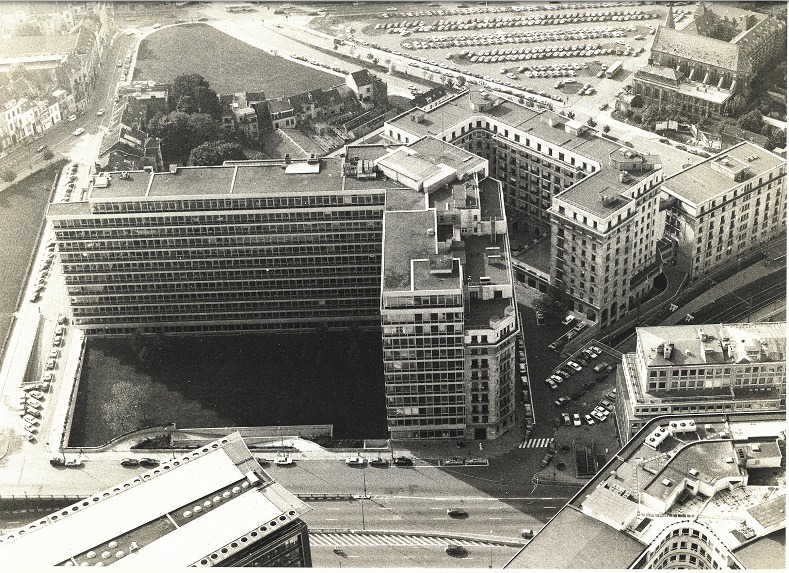Both visitors and locals may sometimes wonder why Brussels became the political capital of the European Union. They may also wonder why the European institutions landed in an area that did not exactly seem predisposed for such a massive invasion.
A new poster exhibit on platform 2 of Schuman Station will attempt to address this sort of perplexity. People waiting for a train, delayed or not, will have the opportunity to discover the European Quarter before Europe and learn about the crucial episodes that made it what it has become today.
In the process, they may understand why the quarter looks so chaotic. Little could be planned as long as no one knew what sort of thing the “Communities” were going to become and where they would end up locating their seats. It took a long time before this became known — to the extent that it is even today. The result is what we see.
It has not been easy to tell this complex story in a compact, intelligible and legible way. It would have been impossible if three or four languages had been used. The choice was made for English only, but simple enough for most visitors and locals to be able to understand it easily.
Like the poster exhibit on the fence around the Berlaymont building, this is an initiative of the European Quarter Fund, this time in collaboration with the Belgian railway company NMBS/SNCB. The European Quarter Fund is financed by real estate owners present in the European Quarter and is hosted by the King Baudouin Foundation. It endeavours to improve both the reality and the image of Brussels’ European Quarter.
The Fund is indebted to Thierry Demey, Christian Dekeyser and Philippe Samyn for providing some of the pictures, and kindly gave The Brussels Times permission to publish a preview of the exhibit. The content of all texts are my sole responsibility.
1. The birthplace of the Treaty of Rome
Val-Duchesse, July 1956 – February 1957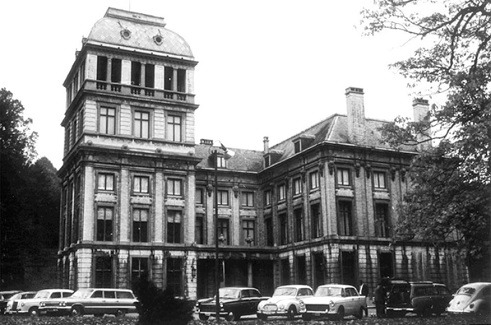
Signed in March 1957, the Treaty of Rome created the European Economic Community, the ancestor of the European Union. It was devised by a task force consisting of delegates from the six future member states, headed by Belgium’s foreign minister Paul-Henri Spaak. The task force met in the castle of Val Duchesse, in the Brussels suburb of Auderghem. In this sense, the European Economic Community was conceived in Brussels. But this does not explain why it settled here.
2. The first meeting of the Council of Ministers
Palais des Académies, Brussels, 25 January 1958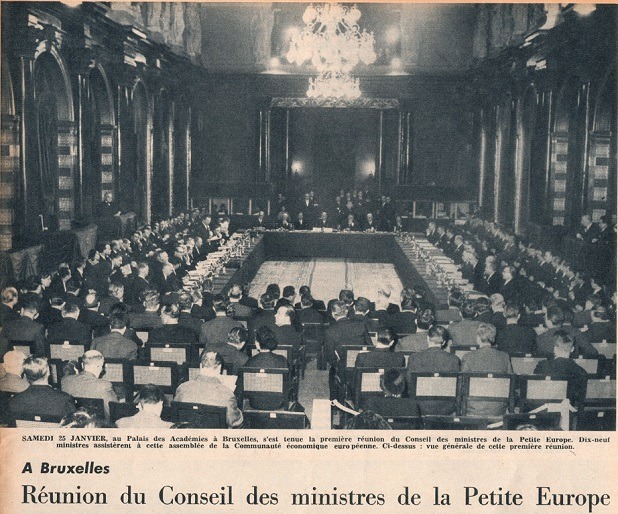
According to the Treaty of Rome, the foreign ministers of the six member states had to hold the presidency of the newly created European Economic Community in turn, one semester at a time, in alphabetical order. As Belgium starts with the letter B, the first meeting of the Council of Ministers was held in Brussels and its first president was Victor Larock, who had replaced Paul-Henri Spaak as Belgium’s foreign minister in May 1957, when the latter became secretary general of NATO.
3. The time of the crucial decision
Honorary degree ceremony, University of Louvain, 10 January 1958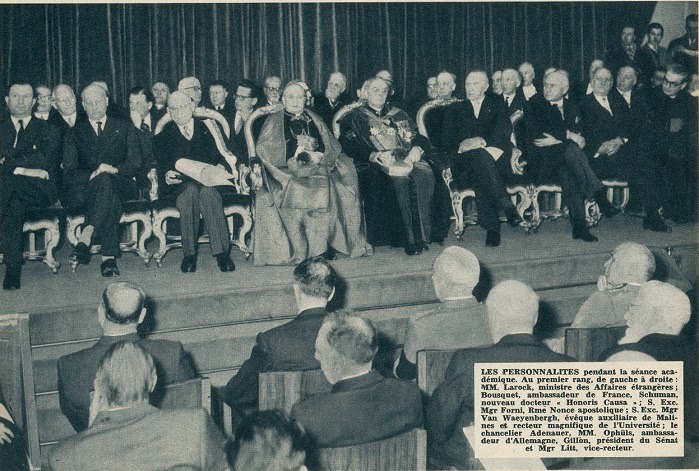
Ten days after the European Economic Community was supposed to start functioning, Konrad Adenauer and Robert Schuman were awarded honorary doctorates for their role in its creation. But at their meeting in Paris three days earlier, the foreign ministers of the six member states had failed to agree on the location of its headquarters. The pensive man to the far left of the picture is Victor Larock. As Belgium’s foreign minister and therefore first president of the Council of Ministers, he was the person in charge of urgently finding a place where the first fonctionnaires could start working.
4. The first headquarters of the European Economic Community
Avenue de la Joyeuse Entrée 23-27, from July 1958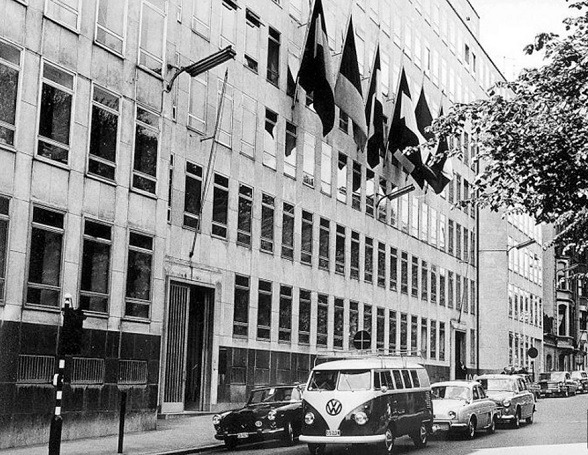
In February 1958, the Belgian government was semi-officially authorized to provide provisional office space for the first employees of the European Economic Community. An office block happened to be nearing completion close to the Parc du Cinquantenaire. The government decided to rent it from the owners, the Royale Belge insurance company, later absorbed by AXA. The whole staff of the European Economic Community moved to the new building in the summer of 1958.
5. The first headquarters of Euratom
Rue Belliard 51-53, from February 1958 
While waiting for the completion of the office building on Avenue de la Joyeuse Entrée, the Belgian government put the former building of its Ministry for Economic Affairs at the disposal of the European Economic Community (the “Marché commun”, as it was known to the locals) and the European Atomic Energy Community (or, for short, Euratom), created at the same time. This building, which is still standing, remained the headquarters of Euratom until the merger of the commissions of both Communities with the High Authority of the Coal and Steel Community (until then in Luxembourg) into a single European Commission in 1967.
6. What used to be a cosy neighbourhood
From deadlock to European quarter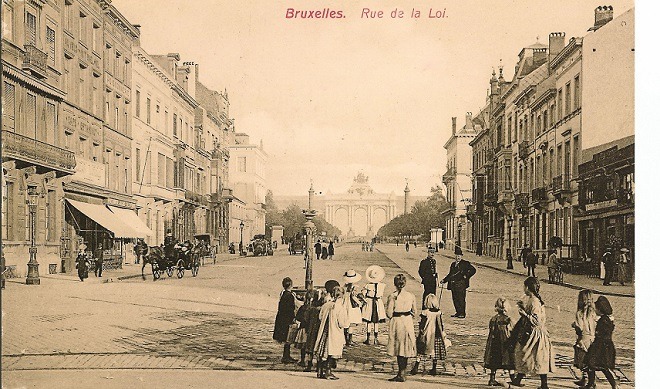
It quickly became clear that the deadlock about the choice of permanent headquarters for the European institutions was likely to continue for a long time, and also that the buildings on Belliard and Joyeuse Entrée would soon prove insufficient. The Belgian government therefore started looking into further options nearby, around the “rond-point de la rue de la Loi”, in an attractive neighbourhood developed from 1837 onwards by the “Société civile pour l’agrandissement et l’embellissement de la capitale de la Belgique”. Which explains why this part of the rue de la Loi was called “rue de la Société civile”.
7. A convent in the countryside
Origin of the name “Berlaymont”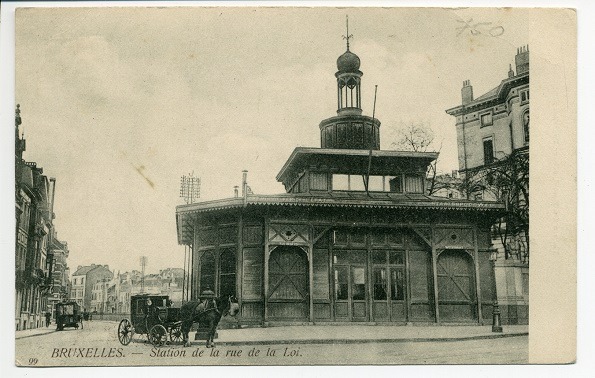
In 1627, a nuns convent was founded near Brussels’ cathedral and what is now the Boulevard de Berlaymont, in a mansion donated by the family of Charles de Berlaymont, mainly remembered for his words to Margaret of Parma, the regent of the Low Countries, in 1566, when a delegation of the Brussels nobility was protesting against the Inquisition: “N’écoutez pas, Madame, ce ne sont que des gueux [beggars].” In 1864, the convent of the Dames de Berlaymont moved to the top far end of the rue de la Loi, still quite rural at the time. In 1879, a wooden train station was erected next to it, at the angle with the Boulevard Charlemagne.
8. An irresistible garden
How to find space without destroying too much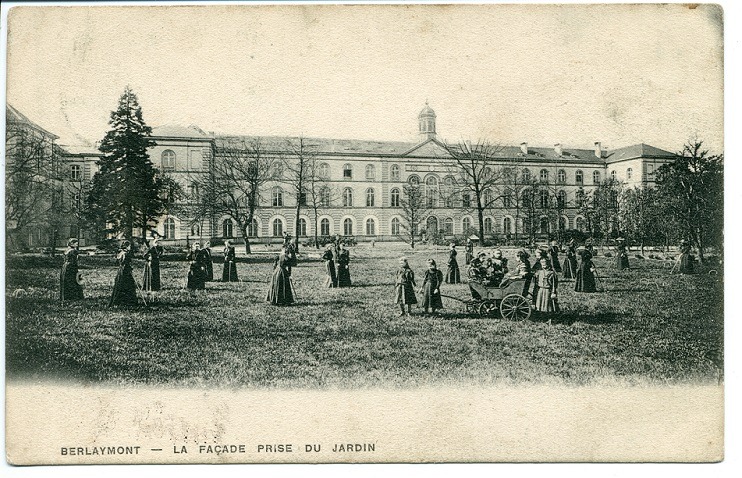
In its quest for additional space in the vicinity of the offices provisionally provided to the European Economic Community, the Belgian government did not take long to express interest in the convent of the Dames de Berlaymont. The convent, which also functioned as a boarding school for girls from well-off families, had a large garden extending all the way to rue Stévin. Acquiring the convent would therefore make it possible to get hold of a site conveniently located that could accommodate a large building, without it being necessary to pull down too many houses.
9. the nuns’ block expropriated
How the king’s wedding nearly wrecked the deal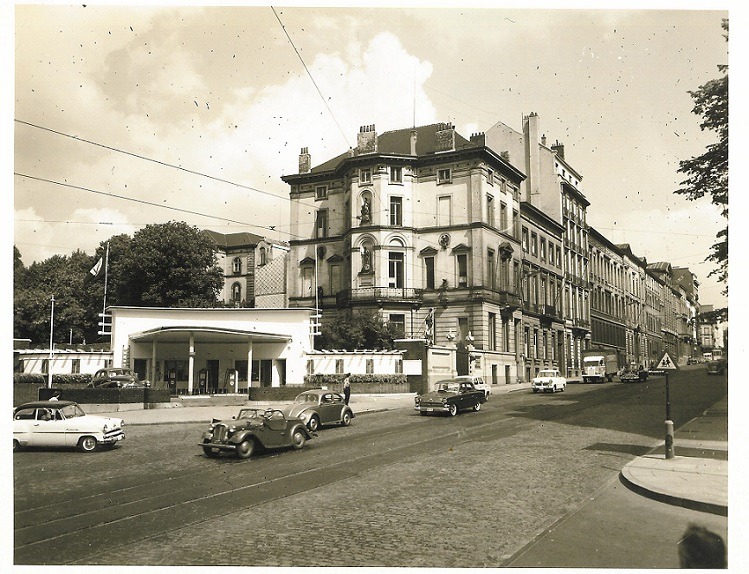
In December 1958, the Belgian government decided to expropriate the block consisting of the convent, some private houses and a petrol station that had by then replaced the train station. Part of the initial deal offered to the nuns was that they would be given the state-owned domain of Argenteuil, in Waterloo. However, as a result of the impending wedding of King Baudouin (in December 1960), his father, King Leopold III, had to leave the Palace of Laeken and was offered the use of this domain, where he spent the rest of his life. To rescue the deal, an alternative solution was found, also in Argenteuil, where the Berlaymont school is still located today.
10. Building the berlaymont
At the core of a new communication hub 
As Brussels was, in theory, only the provisional seat of the European institutions, the Belgian government decided to erect a building that could conceivably be allocated to a Belgian ministry if the European institutions were ever to leave. The star-like structure of the building was inspired by the UNESCO headquarters in Paris. The construction work was combined with the building of Brussels’ first metro line, connecting Place de Brouckère and Rond-Point Schuman, and of car tunnels connecting the car park under the Berlaymont with the rue Belliard on one side and the motorway to Liège on the other.
11. the old berlaymont
Birth of an icon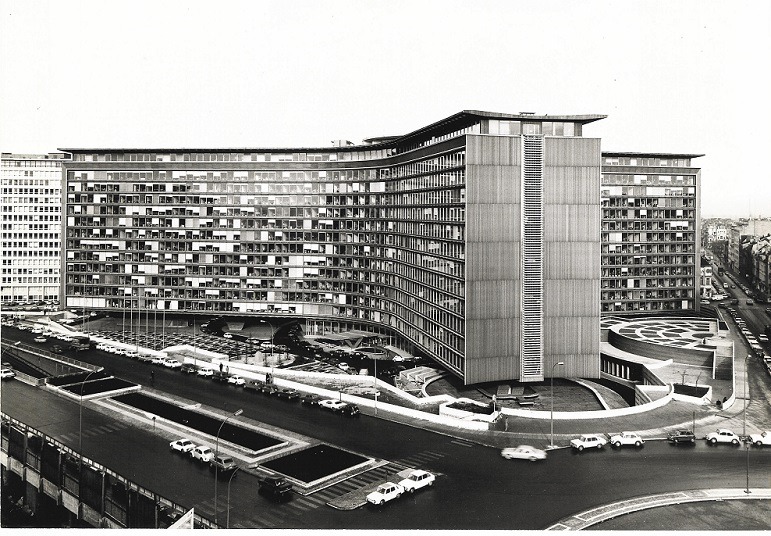
The building of the Berlaymont started in 1963. Part of it was completed and occupied by the European Commission in 1967, and the rest in 1969. Around 3000 civil servants in total were based there. Because asbestos was used for the insulation of the building, it was decided in 1991 that thorough renovation was necessary. The services of the European Commission then moved to several other buildings. All the commissioners and their respective cabinets moved back to the Berlaymont in 2004. The Berlaymont building has become the most iconic of all the European Union’s buildings. Its stylized image has been incorporated into the logo of the Commission.
12. Contagion around the berlaymont
Anarchic development for provisional headquarters
While the Berlaymont was under construction, other buildings were being erected nearby by private developers, in the hope of renting them out to the European institutions. Among them, the Charlemagne, which was actually completed before the Berlaymont, and further up, the triangle standing between the Parc du Cinquantenaire and the Rond-Point Schuman. Owned by AXA, it was rented out to the European institutions until it was demolished in 2006 and replaced by the headquarters of the European External Action Service — luckily equipped with shops and restaurants thanks to pressure from local committees.
13. Building the Justus Lipsius
Council and Commission face to face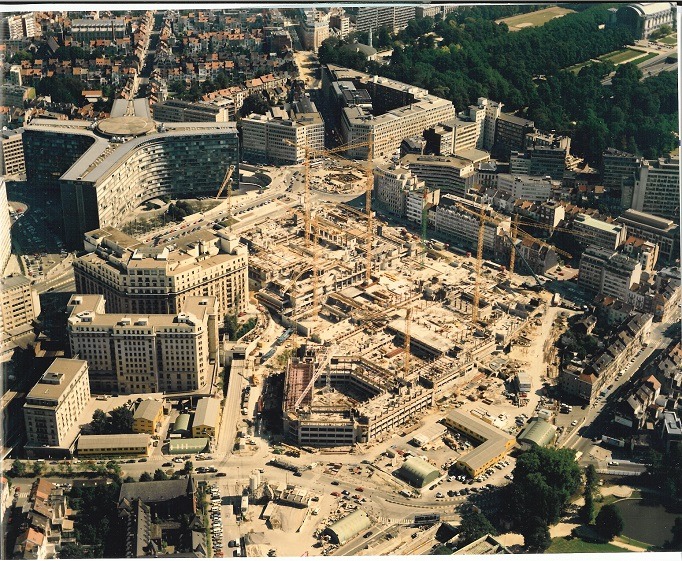
The Council of Ministers was first located next to Brussels’ Central Station and then in the Charlemagne building. But it wanted a larger building that would meet its specific needs. In 1973, the Belgian government proposed a site opposite the Berlaymont, that had become a wasteland when the tunnel was built, but the Council found it too small. The final deal, adopted in 1985, involved the destruction of a block of houses extending to rue Froissart. Construction started in 1989 and was completed in 1995. The building owes its name to a street it replaced. Justus Lipsius was a 16th century scholar who taught at the Universities of Louvain and Leiden.
14. Fitting Europa into the residence-palace
The end of the myth of the rotating capital 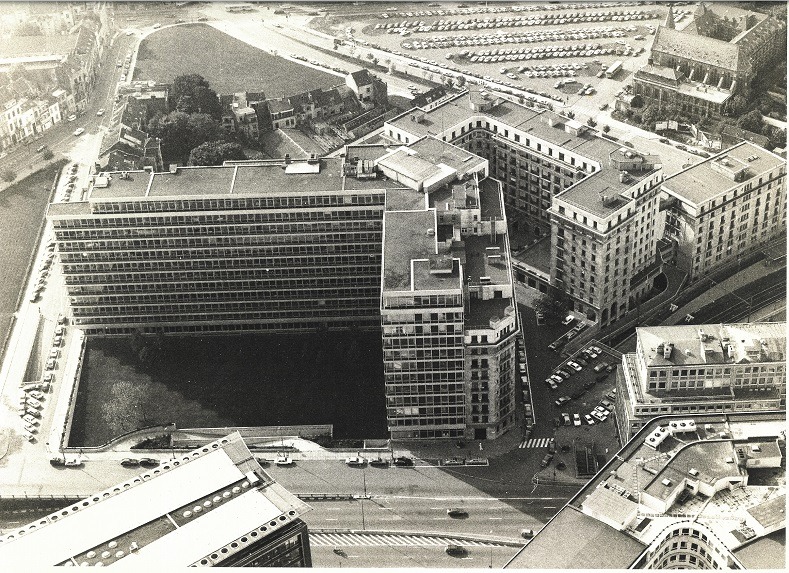
In 2001, the European Council of heads of state or government decided that all its regular meetings would be held in Brussels. From then on, European leaders dared to speak of Brussels as “the capital of the European Union”.
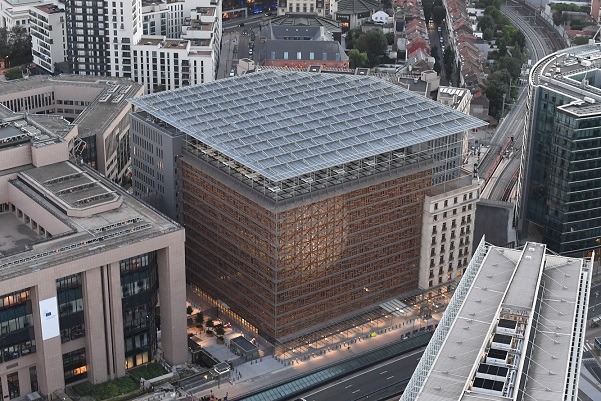
© European Union, Philippe Samyn and partners
To host these meetings, the egg-shaped Europa building was erected next to the Justus Lipsius. Its construction started in 2011 and replaced a lawn and a modern structure that was added in the 1960s to the Residence-Palace, a massive apartment complex with its own swimming pool and theatre dating from the 1930s. This is where Europe’s leaders will meet again and again — ultimately because nuns settled across the street 150 years ago.
By Philippe Van Parijs

